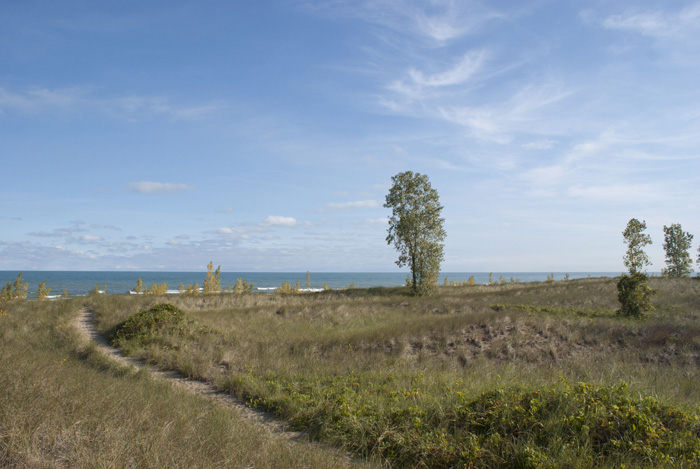Dune
« Return to Gallery
 Lake Michigan, northerly winds, vegetation and sand interact to form the distinctive dune landscape. Inland from the beach, sand dunes rise in a series of ridges, blowouts, and valleys. Unique, intradunal ponds, called pannes, fill many depressions between the dune ridges.
Lake Michigan, northerly winds, vegetation and sand interact to form the distinctive dune landscape. Inland from the beach, sand dunes rise in a series of ridges, blowouts, and valleys. Unique, intradunal ponds, called pannes, fill many depressions between the dune ridges.
The dunes represent a unique and highly specialized ecological system. Marquette Park is home to 73 threatened, endangered and rare species. Marquette Park hosts a wide-variety of habitat, making it a welcome home to many different species, including birds. Bird migration occurs along the eastern and western shores of Lake Michigan. Due to a “funnel effect” prevalent during the fall migration, the greatest concentration of migratory birds in Northwest Indiana occurs at Marquette Park at this time (Birds of Indiana, 1997). Several endangered, threatened and rare bird species frequent this site on an annual basis attracting wildlife enthusiasts from afar. In fact, the Audubon Society has designated Miller Beach, from Marquette Park to Lake Street, an Important Bird Area. Due to its unique location on the Great Lakes, Miller Beach has a peak fall season that brings migrating birds close enough to view and offers a type of birding called lake-watching that is especially popular.
Marquette Park’s dunes became a part of aviation history with Octave Chanute's 1890 glider and biplane flights. In the summer of 1896, seven years before the Wright brothers took off in their airplane, Octave Chanute's design of a biplane glider flew 350 feet in 14 seconds. This significant aviation accomplishment took place in the dunes in Marquette Park, along the southern shore of Lake Michigan.
|